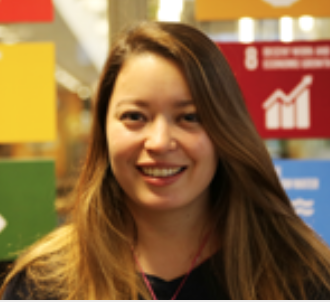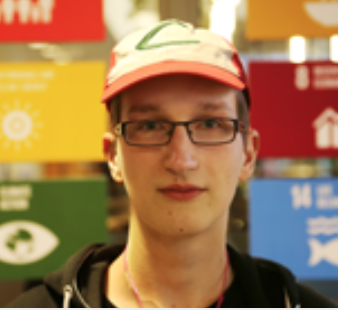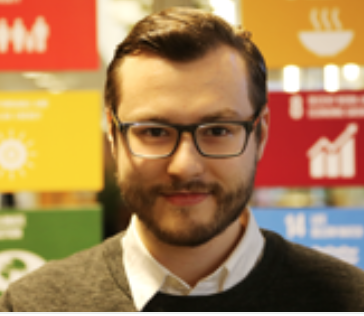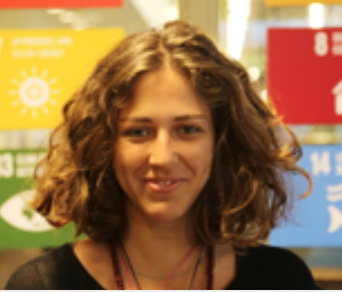Now we have designed and presented our team identity, it is time to start making something! This week is all about getting familiar with SCREAM. This is a design method developed by MediaLab itself and contains the best of agile sprints, SCRUM combined with fostered creativity. Also, if we would like we can also scream it out, but that aside. SCREAM basically leans on three stadia: research translating to creation and the other. SCREAM works with different sprints, wherein you will work towards a goal … ?
To try out this design method, we were asked to work on a problem from start to finish. Instead of falling in love with a product, we first need to fall in love with the problem! I will write a short summary of our week of tinkering in the form of a mini design sprint.
Tuesday
“the PROBLEM is finding the right PROBLEM”
“How can we empower children with disabilities so that they can have clear and customized representation in the toys they play with, in a sustainable manner?”
We fortunately didn’t have much trouble finding the right problem, as it was already given to us. But before falling in love with the solution, we first needed to fall in love with the problem…
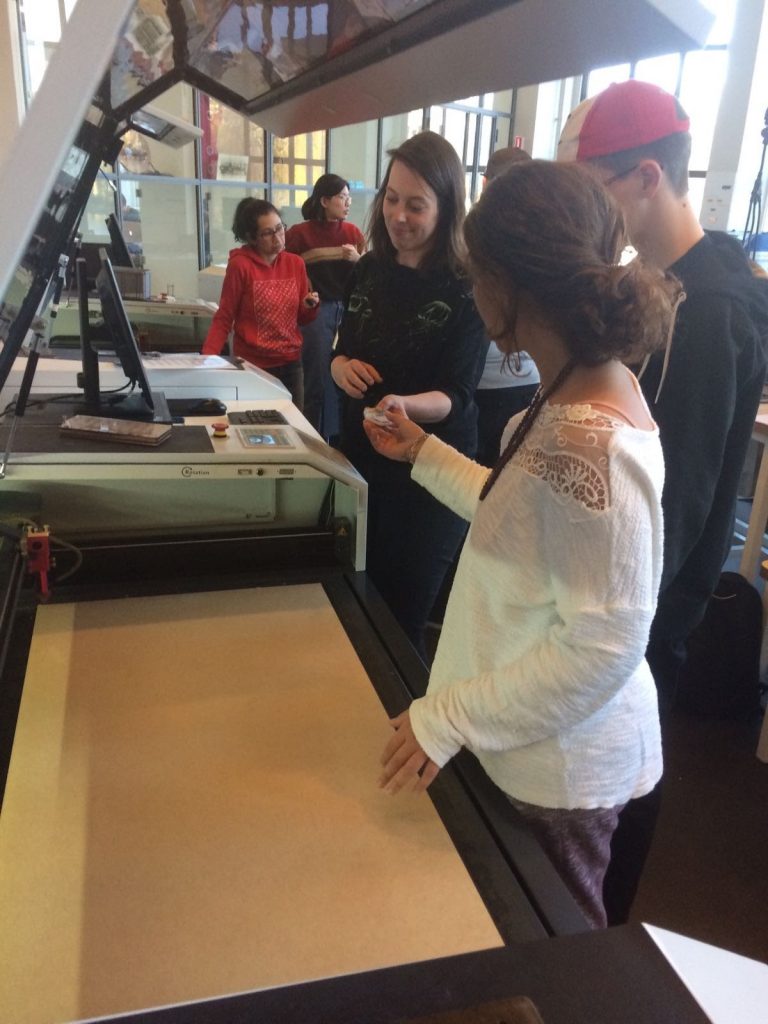
// Nour and Martijn working with a laser cutter to make the board
After EXTENSIVE brainstorming (and having difficulty controlling our feelings for the solution…), we designed an activity to uncover which sense participants feel they could live the most without. The activity involved a board with 5 different simple activities that require each of the 5 senses. Participants first complete the activities without any hindrance, and then they are completed once again with an impairing tool to simulate a specific disability.
Wednesday
always create an audience
In what way does your prototype call for discussion? –> Test your prototype and spark the discussion. Gather data!
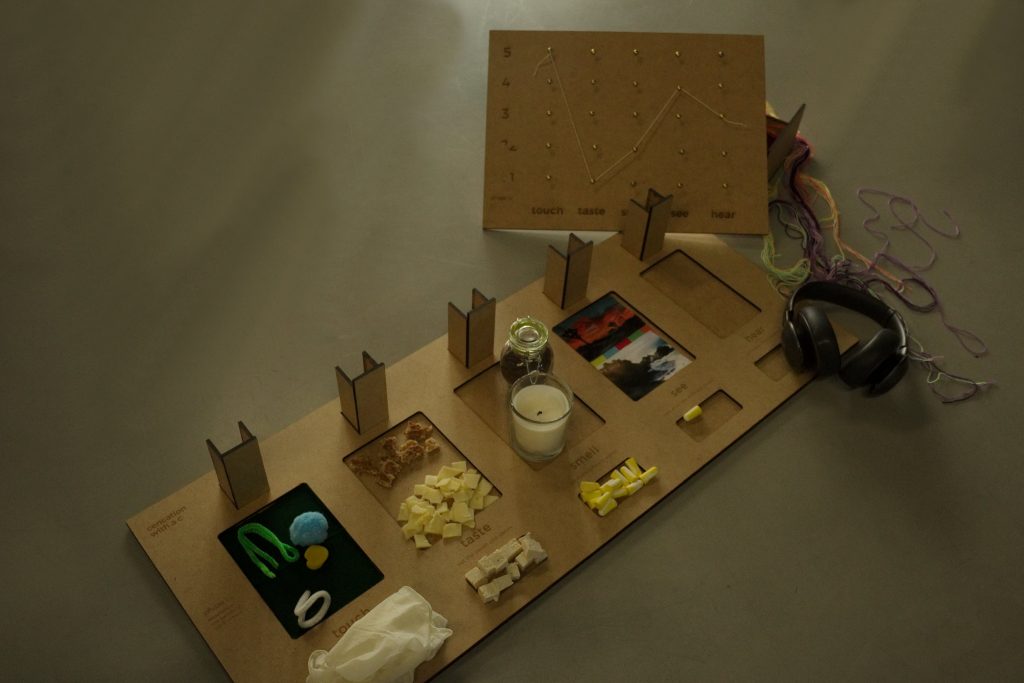
// Finalized board for the data gathering experiment
We went out on the grounds of the HvA to conduct our experiment. Participants were asked to complete the following activities:
- Touch – various objects are first felt in the hand uncovered, and then with a glove to simulate partial loss of touch.
- Taste – participants first eat a piece of stroopwafel and Gouda cheese, then a piece of tofu to simulate loss of taste.
- Smell – participants first smell a small jar of ground coffee and a scented candle, and then repeat the process with the nose plugged to simulate loss of small.
- Sight – participants view picturesque images of scenery, and then view the same images again with glasses designed to simulate tunnel vision and loss of vision.
- Hearing – participants wear headphones to listen to clips of a song. The song first starts normally, then gets progressively distorted to simulate losing one’s hearing.
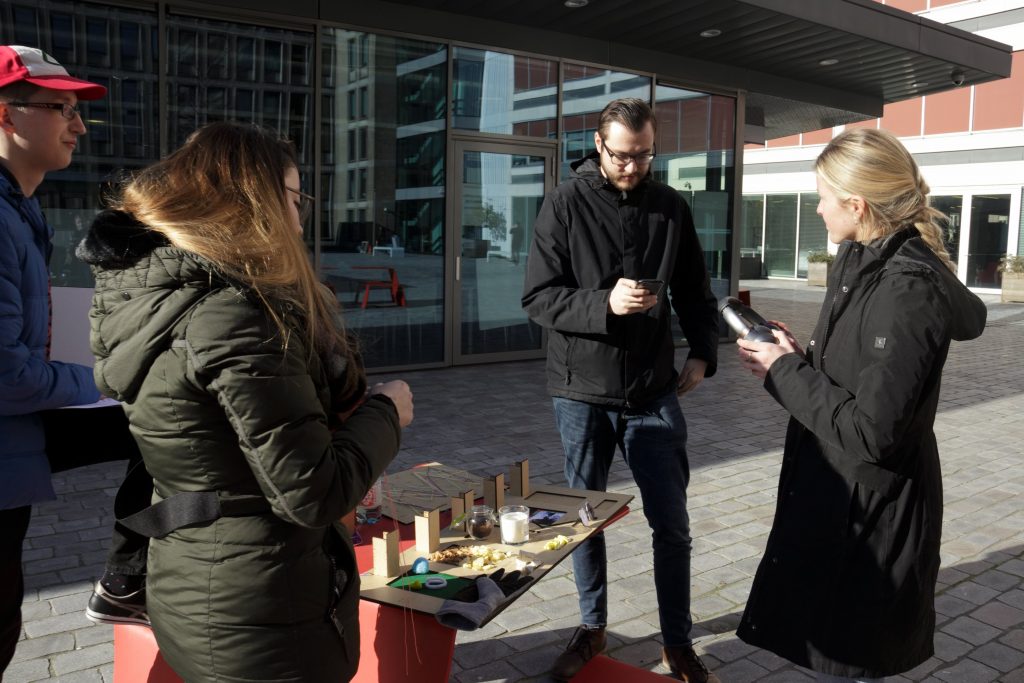
// Jake, Barbara, and Martijn conducting the experiment with a participant
Participants were finally asked to rank from least likely to most likely the senses they preferred to lose. Out of 12 total participants, the results were displayed on a string graph, and showed that the sense desired least to be lost was sight. Thus, we decided to design a game which highlights blindness.
Thursday
After much debate on what out game would be like, we decided on a board game. Called a Day in a Life, players simulate an average day of a blind person while needing to overcome obstacles they may face. Players roll dice to travel around a board, landing on certain actions that help or hurt them. Players may pick up a “Bonus (Guide) Dog” or “Bonus Braille” to overcome an obstacle. Obstacles that may be faced during the game include taking the wrong train because the station announcements weren’t working (and thus having to move backwards), being unable to cross the street because the acoustic traffic signal isn’t working (and thus losing a turn), and needing to wait for another player to pass you to read the menu at a restaurant for you (you starve to death and lose the game if you’re in last place at the time).
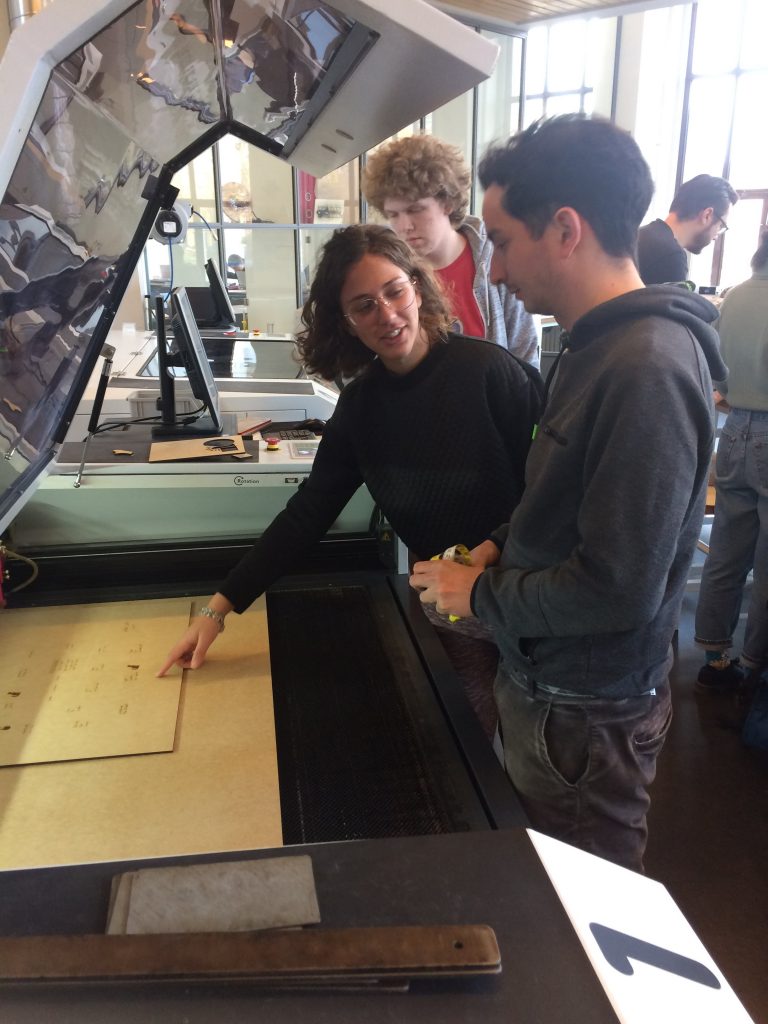
// Nour and Felipe work on the laser printer
We spent the first half of the day designing the board, and the second half in the Maker’s Lab creating the board and other game pieces.
Friday
After finishing up the final touches of our game, it was time to showcase it at the expo!
This is what the final setup looks like…
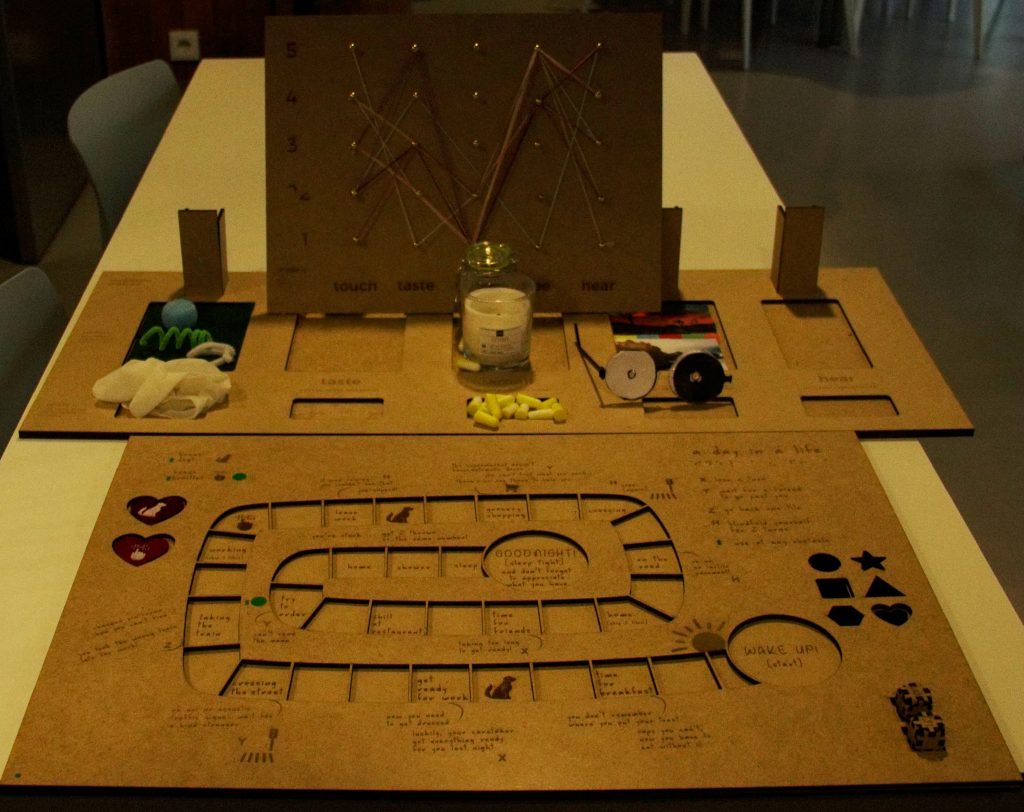
We gave an overview of the project, answered questions, and then it was time to play!
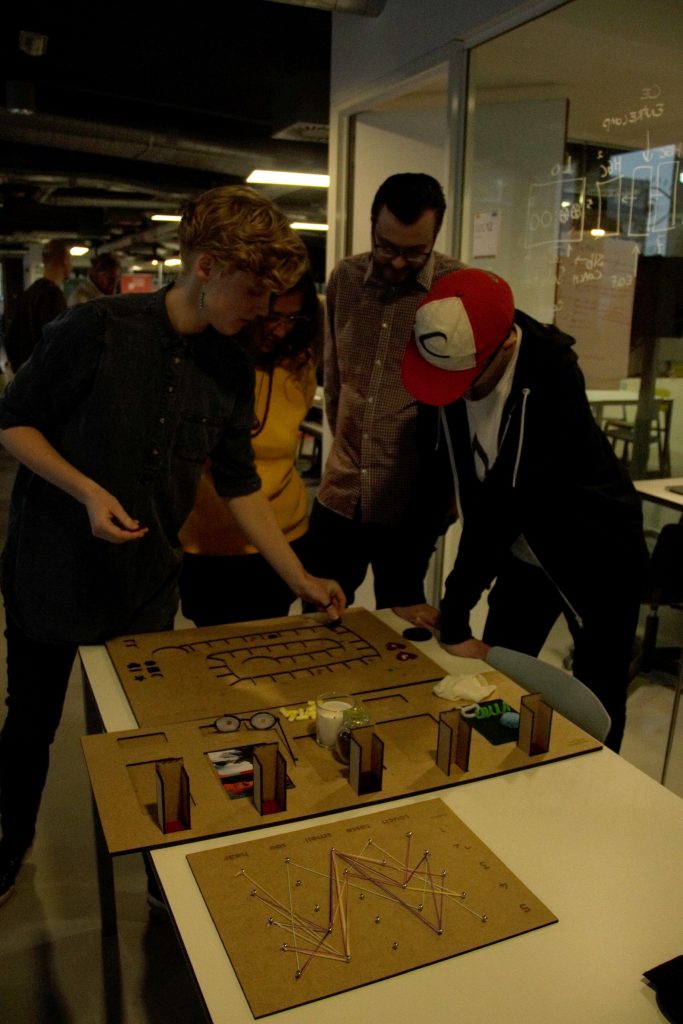
// Anneke trying out our game board
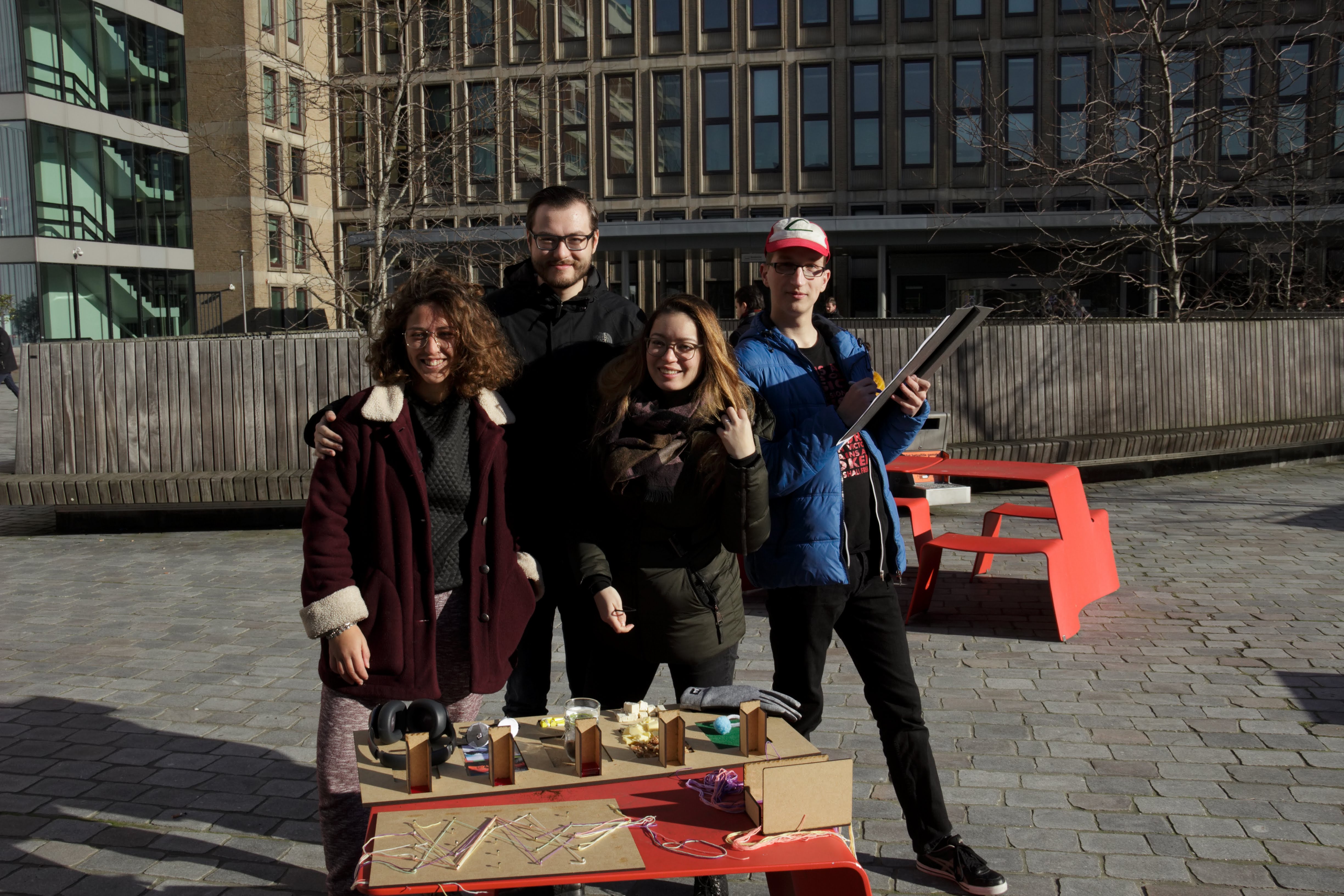
// Nour, Jake, Barbara and Martijn: Team Cynergy presenting their test products
Overall it was quite an exciting week getting to know the machines and teammates. We are looking forward to creating more and dive into other problem sets!
Jake & Barbara



